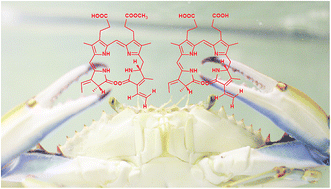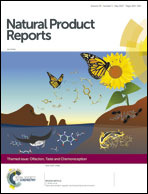Finding food: how marine invertebrates use chemical cues to track and select food
Abstract
Benthic marine invertebrates sense molecules from other organisms and use these molecules to find and evaluate the organisms as sources of food. These processes depend on the detection and discrimination of molecules carried in sea water around and in the mouths of these animals. To understand these processes, researchers have studied how molecules released from food distribute in the sea water as a plume, how animals respond to the plume, the molecular identity of the attractants in the plume, the effect of turbulence on food-searching success, and how animals evaluate the quality of food and make decisions to eat or not. This review covers recent progress on this topic involving interdisciplinary studies of natural products chemistry, fluid dynamics, neuroethology, and ecology.

- This article is part of the themed collection: Olfaction, Taste and Chemoreception


 Please wait while we load your content...
Please wait while we load your content...